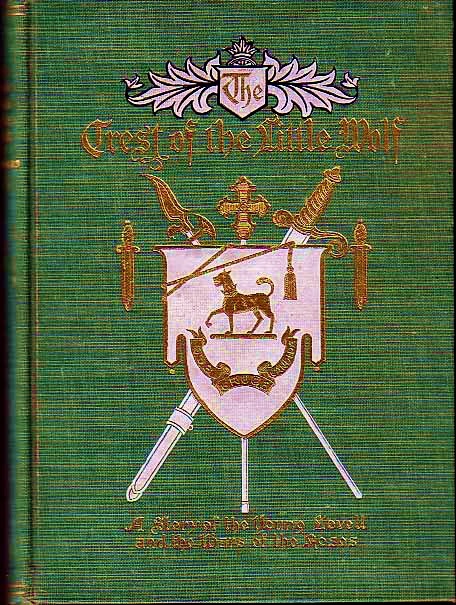To be honest, I’m not all that interested in genealogy.
I don’t care much for pictures of tombstones, either (Although I am excited about the new iPhone app for findagrave.com - more about that later). Tombstones tell us little more than approximately when a person was born and died, perhaps the two least interesting facts about him or her.
I feel no compulsion to learn the names of most of my relatives, even though it’s an honor to know many of the ones I’ve met or learned about. Needless to say, the producers of “Who Do You Think You Are,” haven’t been in touch. Camera crews will not be following me around as I inspect antiquated documents while exclaiming, “No way!” or “Get outta town!” That said, I find that the show, sponsored by Ancestry.com, is often a real treat, and own a copy of the Jim Parsons episode, which holds up well to repeat viewings.

I do love great stories, and some of those kept alive by the Lovell and Lovewell families are thoroughly absorbing, whether I’m related to any of these people are not. Apparently, Thomas Daniel Rhodes felt the same way. Twenty years before he and his wife, May Lovell Rhodes, produced their volume of Lovell family history, parts of which were later folded into Gloria Lovewell’s “The Lovewell Family,” Mr. Rhodes published a work of historical fiction about one of his wife's ancestors.
“Crest of the Little Wolf” is subtitled “A Tale of the Young Lovell and The Wars of the Roses.” A trade publication from 1904 announcing the new book described it as "A romance with the historic setting of the Wars of the Roses in Edward IV’s reign, introducing high and mighty personages of the court, including the Earl of Warwick and Richard of Gloucester, afterwards Richard III. The love story of gallant Lord Lovell and beautiful Anne Fitz Hugh was accompanied by fightings and wars.” No kidding.
Francis Lovell, 1st Viscount Lovell, was a supporter of Richard during the Wars of the Roses, and refused to give up even after his monarch’s death at Bosworth Field. Although initially listed among the fallen who lay in heaps around Richard, Lovell escaped to stir up further trouble for the Lancastrians, finally fleeing to Scotland after surviving the Battle of Stoke Field, the final series of armed clashes between the Houses of York and Lancaster.
There is a macabrely romantic rumor about Lovell’s later years, passed along by Francis Bacon, that the Yorkist leader lived hidden away in a cave or vault after the wars. The story, while unlikely, was revived two centuries after the Wars of the Roses, when a seated skeleton was uncovered in a secret chamber at Minster Lovell in 1708. My favorite story from the aftermath of the wars, however, was what happened to the pretender to the throne, Lambert Simnel, after he was captured and pardoned by Henry VII. The king gave his former rival a royal job turning the spits in his kitchen, later promoting him to falconer.
While some great tales are told about the Lovells of England and America, and the Lovewells of America, does any real evidence exist that binds these two families together? There is a tradition that old John Lovewell was born at Weymouth, the port city on the southern coast of England where Robert Lovell and his family boarded a ship for America in 1635. Since part of John Lovewell’s history, including a few decades of his long life, seem to have been borrowed from his father, the man we know as John Lowell, the association with Weymouth may belong to him. Then there is the matter of the middle name of Thomas Lovewell’s younger brother Christopher. We lack middle names or even initials for most of Moody Bedel Lovewell’s children, as if they cost extra in those days, but not for Christopher Wolfe Lovewell, who died at Vicksburg in 1863.
The name “Lovell," as T. D. and May Lovell Rhodes, point out, originates with a Norman nobleman “known as Lupelius, or the Little Wolf, which designation was softened to Lupel and then to Luvel which he chose as his surname, the spelling was changed by his successors to Lovell and that became the surname of most of his descendants.” Was “Wolfe” chosen for Christopher Lovewell as a sly acknowledgment that the Lovewells were once Lovells? Even if there is little doubt that they were Lovells, exactly which ones were they? Was it really one of Robert Lovell’s children who decided to tweak the traditional family name? Gloria Lovewell thought so, identifying Robert's son John, in her book “The Lovewell Family," as the ancestor of the Lovewells of Dunstable. Unfortunately, she does not reveal the smoking blunderbuss that would help prove the point.
At lease one researcher seemed confident that a link can be shown to exist. Among prolific genealogical sleuth Sherman Lee Pompey’s extensive writings is a paper which, judging from its title, purports to trace the Lovells of England to the American Lovewells. Whatever he had to say on the subject is not included in Gloria Lovewell’s book of family history. She did get most of her information on Thomas Lovewell’s brother William from Pompey, and lists his letters to Orel Poole in her bibliography. One of these days we’ll have to track down his book on the Lovells and Lovewells to see what evidence Pompey turned up. Until then, we’ll just have to make a leap of faith.